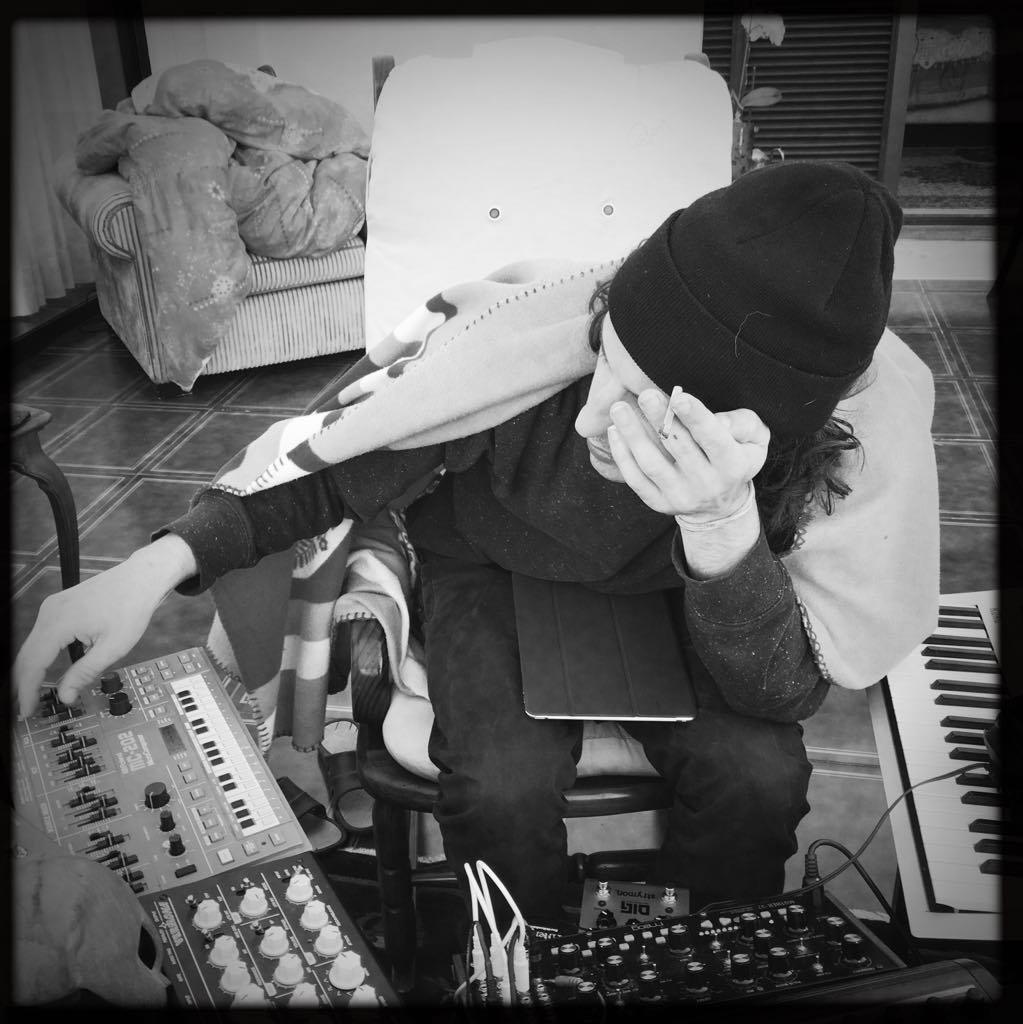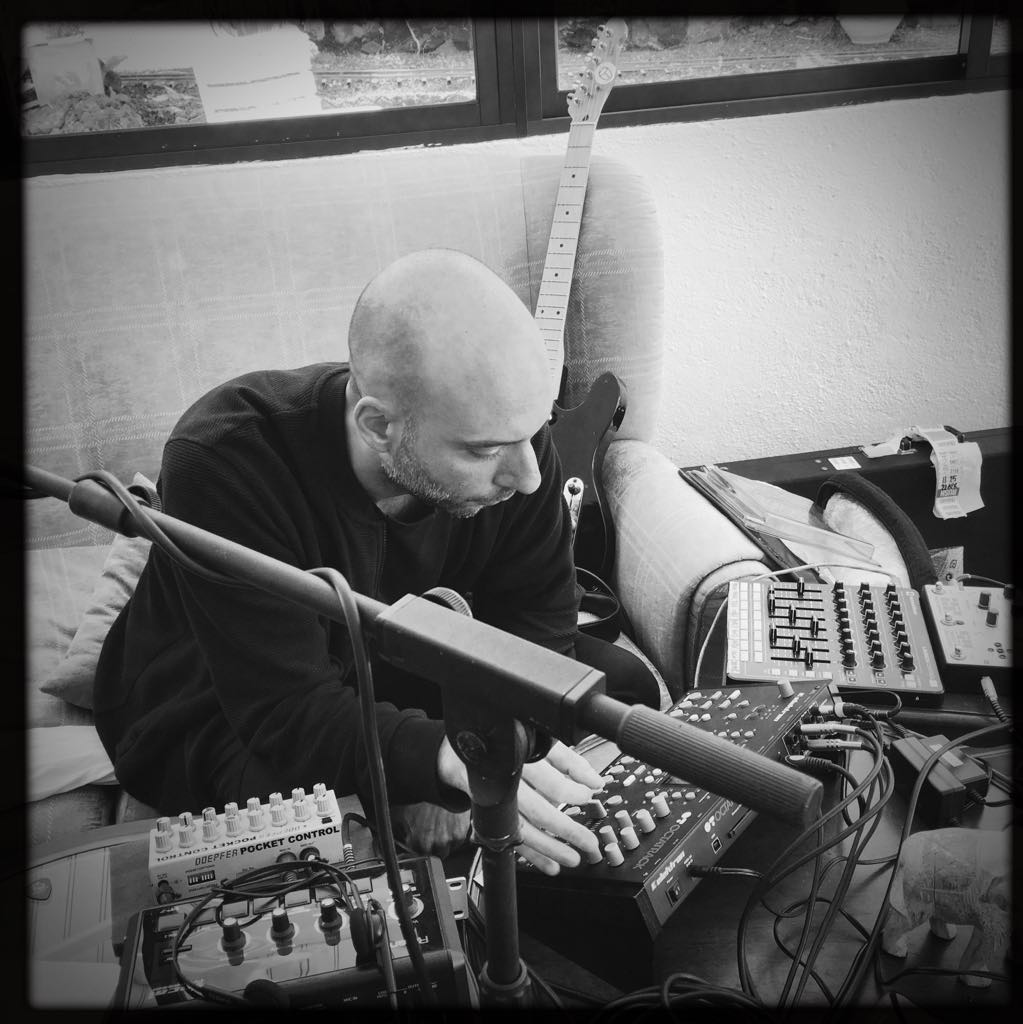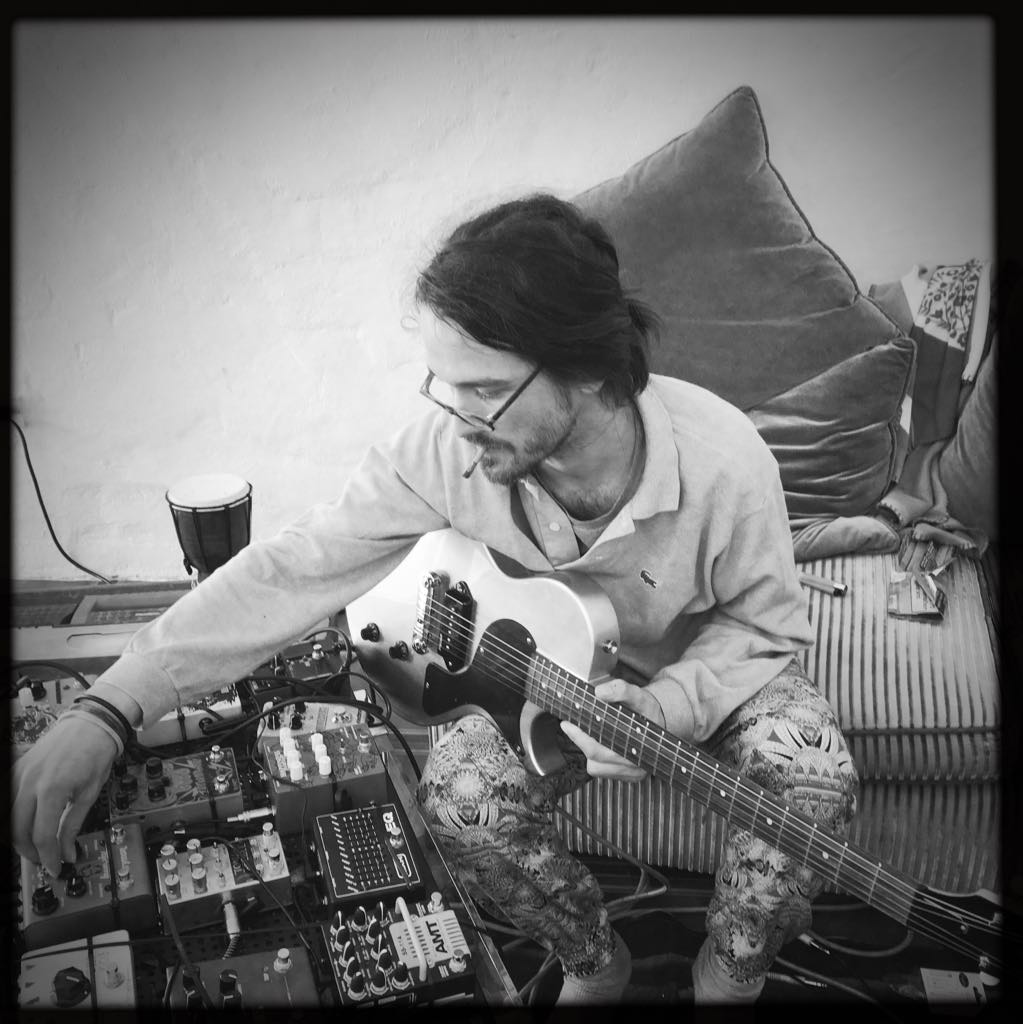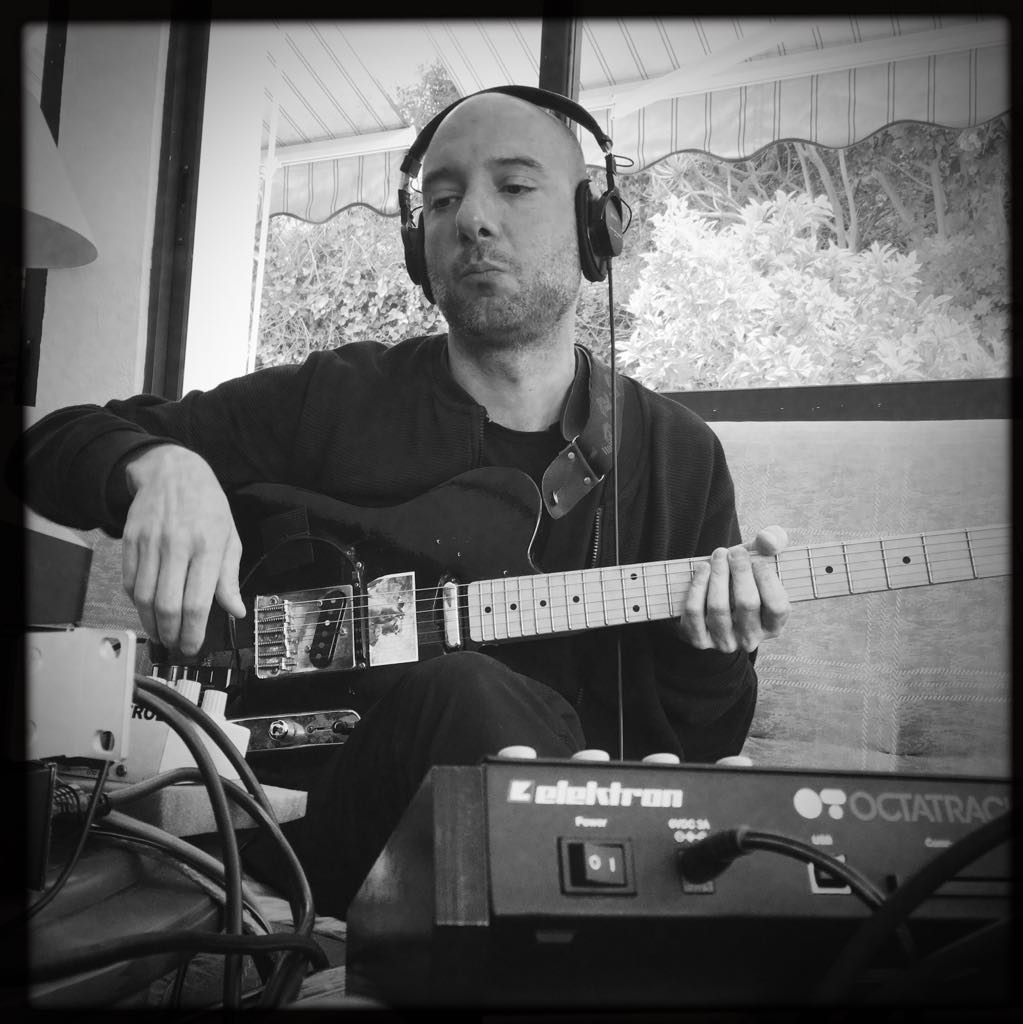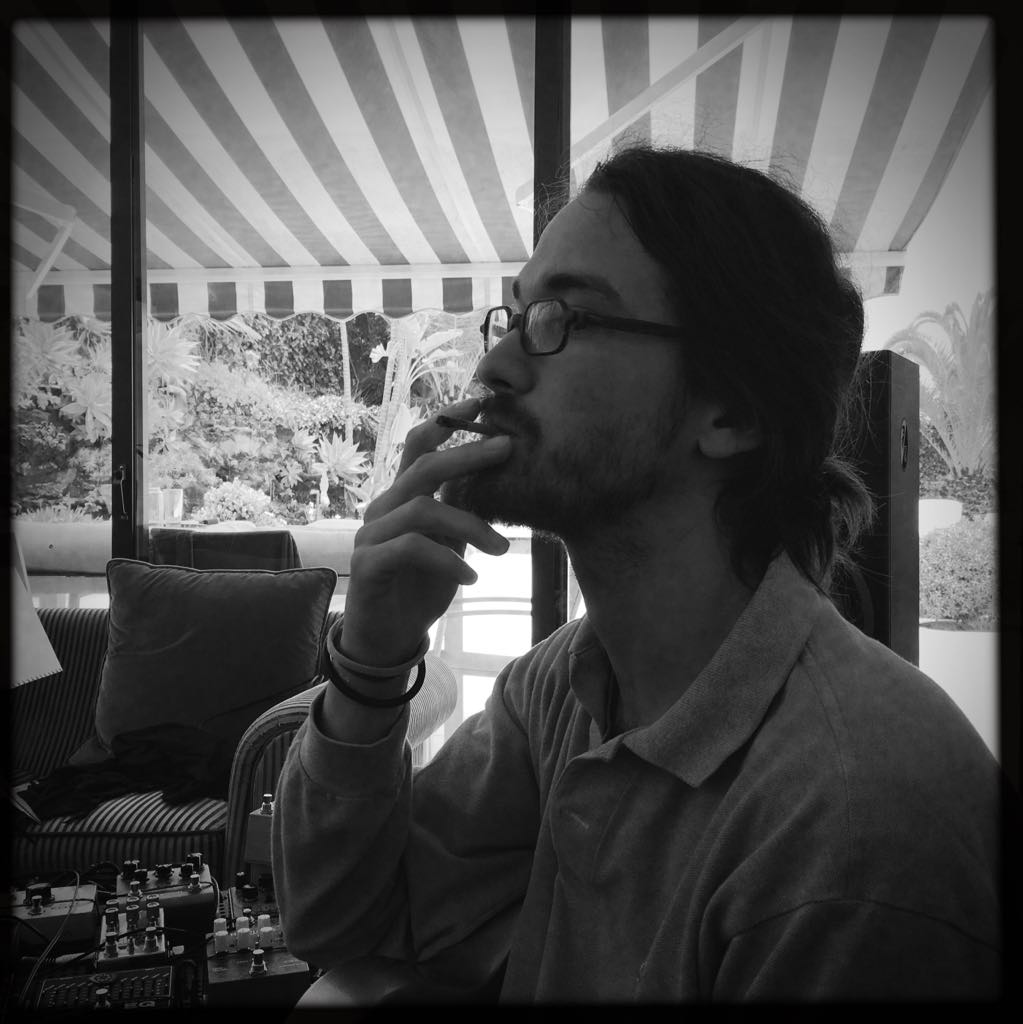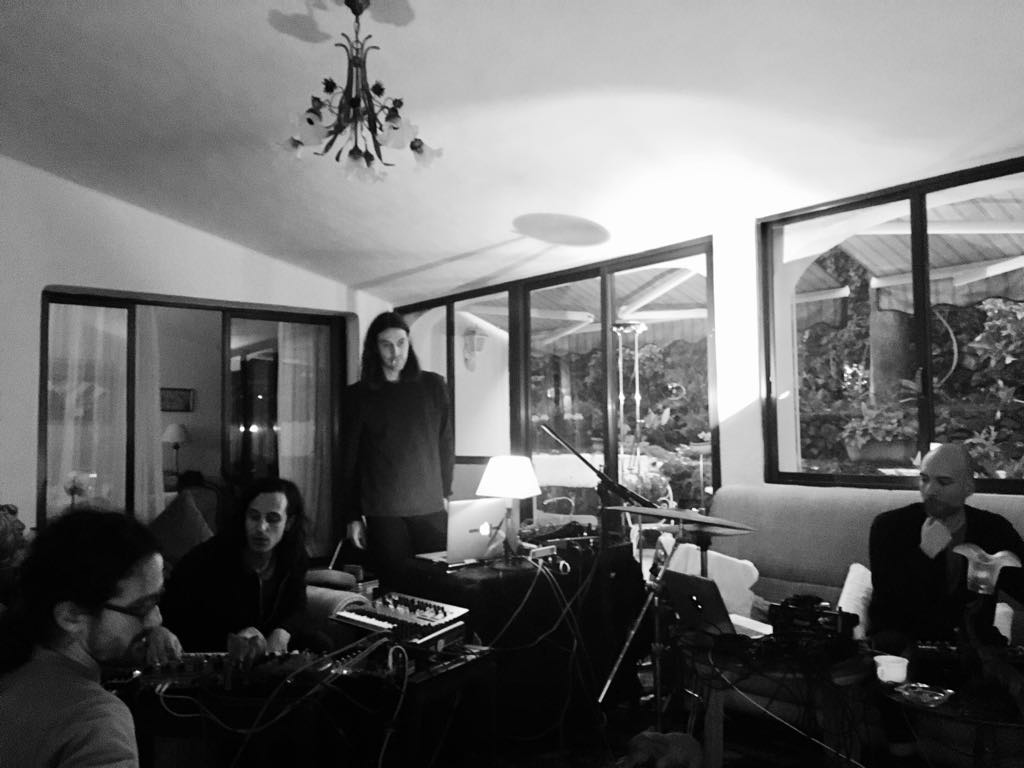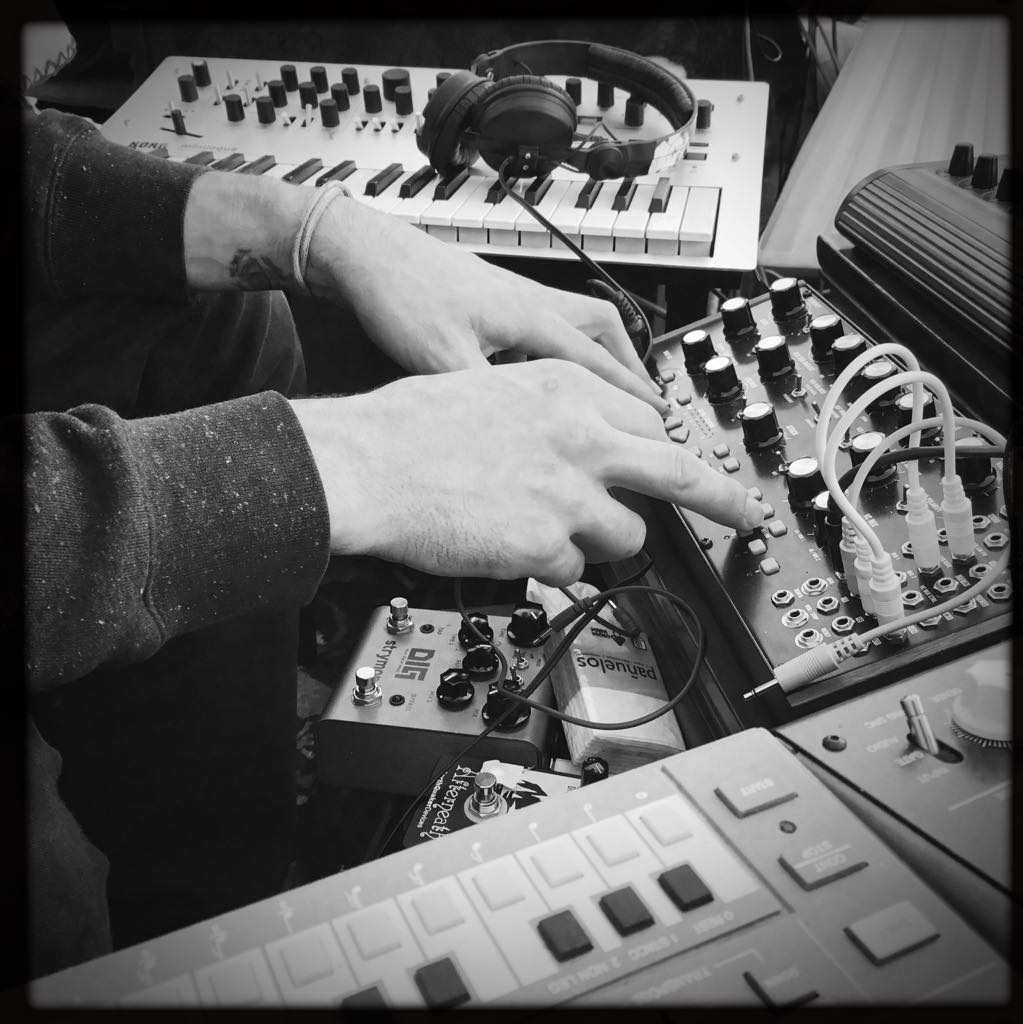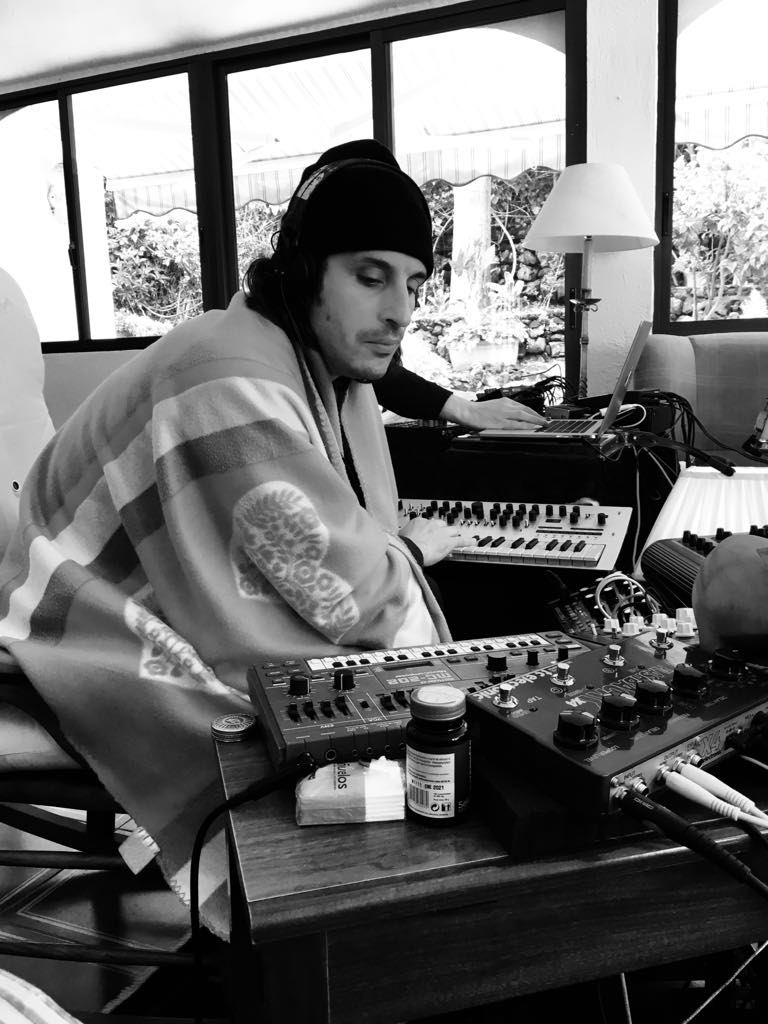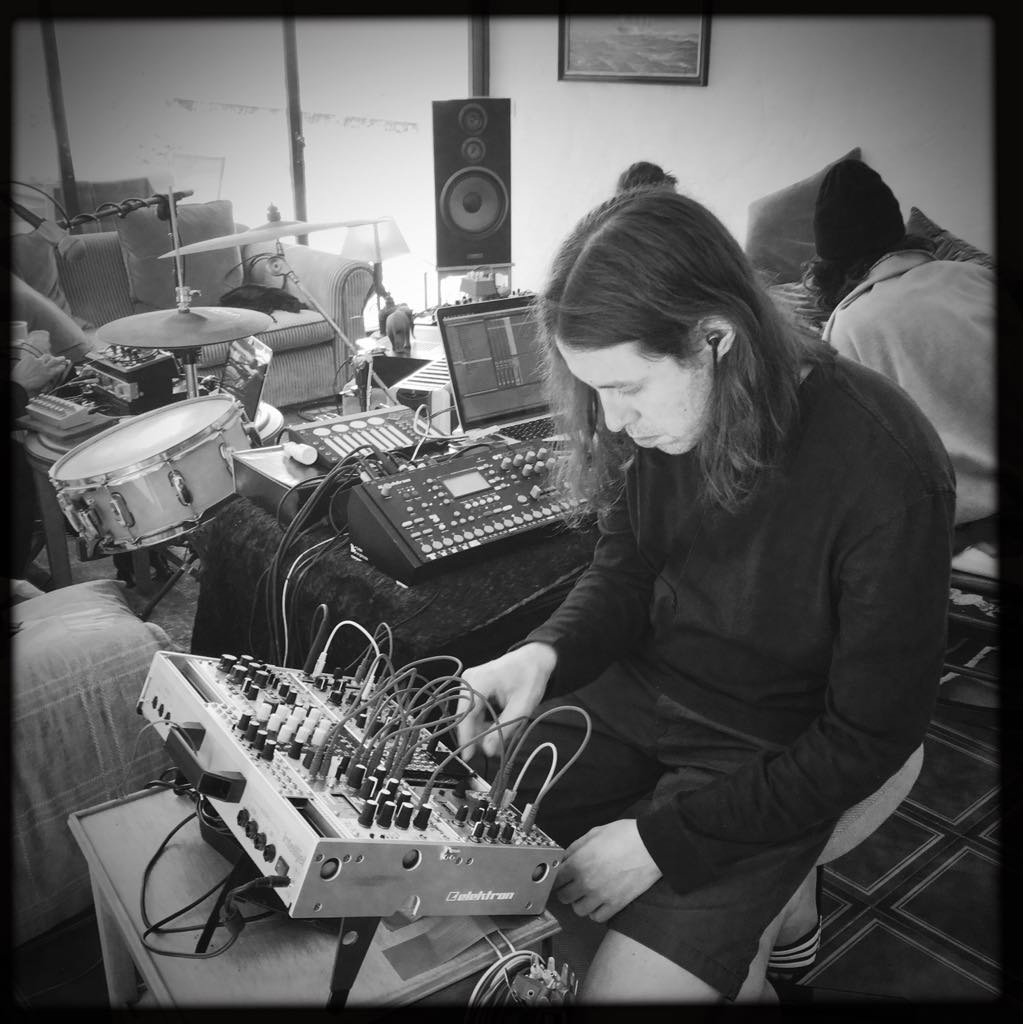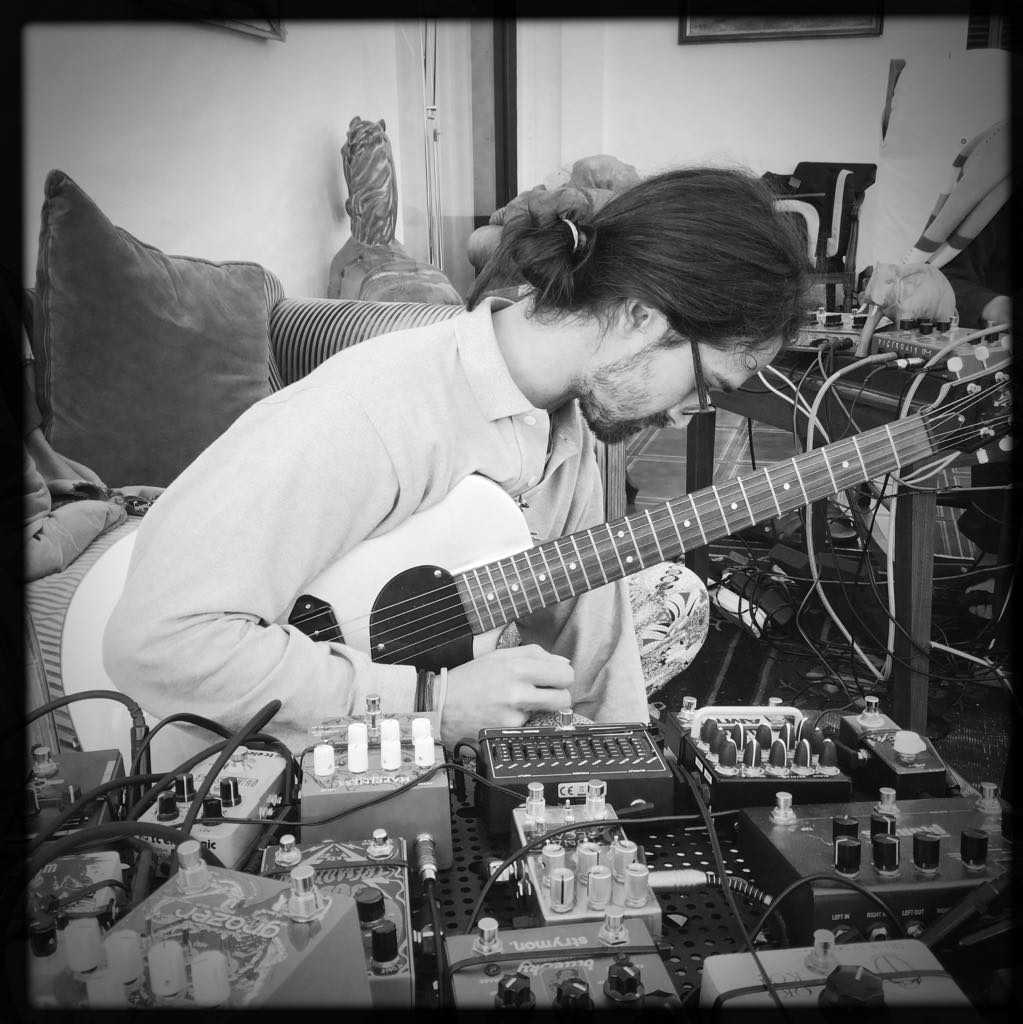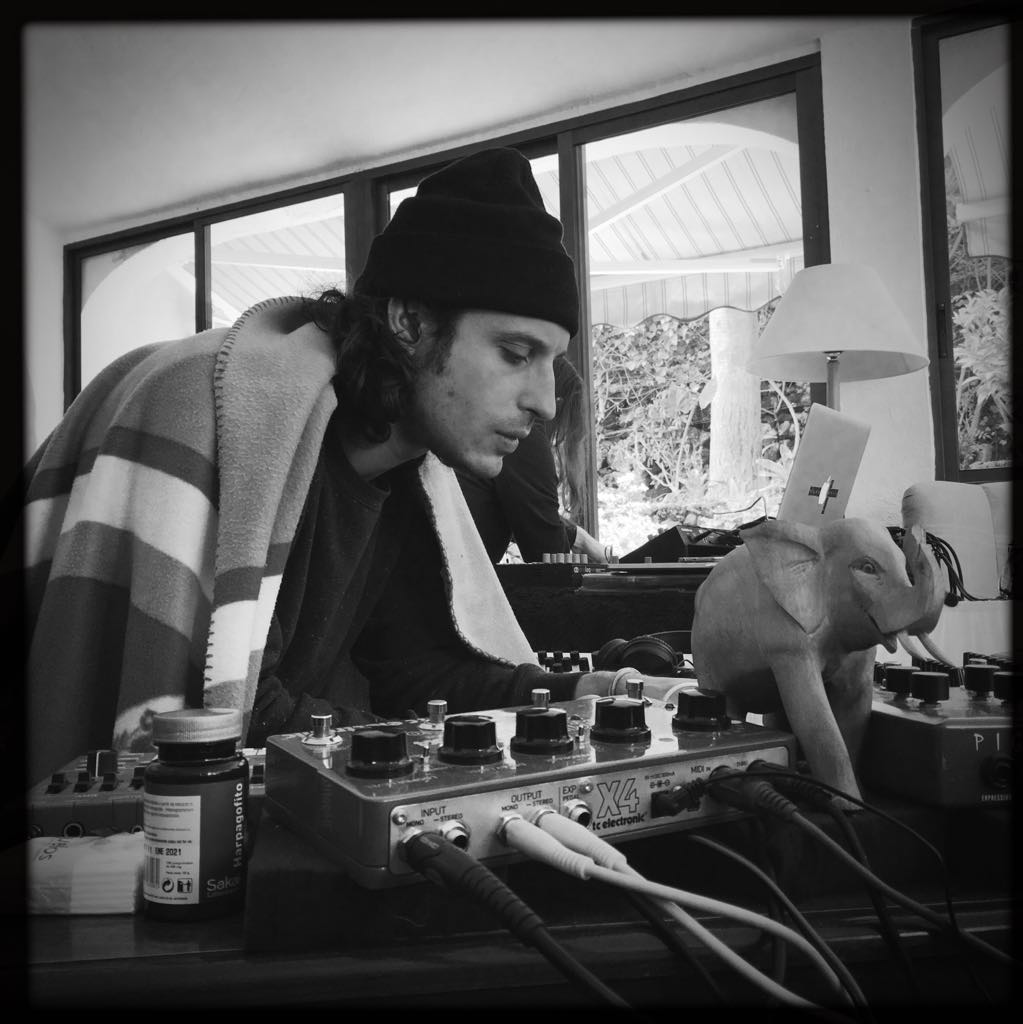Studio Essentials: Triptease
The story and setup behind 'Mescaleros.'

Studio Essentials: Triptease
The story and setup behind 'Mescaleros.'
Editor note: a version of this feature was released in the zine to accompany the 19th edition of XLR8R+, a special Visionquest edition featuring tracks and content from Shaun Reeves, Ryan Crosson, Lee Curtiss, and Seth Troxler, plus this Studio Essentials with Visionquest artists Triptease. You can find more information on the package here.
Triptease is an ongoing musical experiment performed by Topper, Jacopo, Francesco, and Hugo. Topper and Jacopo are lifelong friends who began the Triptease project back in 2012, and they were joined by Francesco, also a friend since kindergarten, some time later, after he picked up his guitar once again. They toured for a year or so as a trio until Hugo, a good friend and mentor since the band’s formative years in their hometown of Turin, Italy, formed the final piece of the puzzle. As a jazz-trained guitarist, he added the color and character to the beats that comprised the project’s earlier embodiment.
Each member has a precise role in the creative process. Topper is on modular synthesizer, samplers, and drum machines; Jacopo takes care of synthesizers, effects, and vocals; Francesco is on electric/MIDI guitar and pedals; and Hugo, also on electric/MIDI guitar, looks after samplers, vocoder, drums, and percussion. Together, they form Triptease, a shared platform through which they complement each other on musical and technical aspects, bringing different backgrounds and ideas all while sharing a view on what kind of music to produce. Their debut album, Mescaleros, is out on April 3 via Visionquest, recorded during a 10-day jamming session in Tenerife, off the coast of West Africa. To mark the occasion, they chatted to XLR8R about the setup behind it.
In April 2018, we found ourselves on a flight to Tenerife, loaded up with gear ready to enjoy 10 days off in the sun in the middle of the Atlantic ocean. A year earlier, Jacopo had been to the island to visit his sister and he came back bragging how cheap, warm, and inspiring it was. He said he’d love the four of us to go there to record some music, away from the usual routine of Berlin. Not long afterward, while randomly speaking to Gregor Kraemer, owner of Club der Visionaere and Hoppetosse, and probably our main supporter since day one, we found out that his parents used to live in Tenerife, and that he still had a house in the north of the island. He was immediately on board with our idea, and he invited us to go there with him a couple of months later.
And so we arrived at Villa Josefina, a five-bedroom villa in Santa Ursula. Unfortunately, the weather was terrible, 11 degrees and rainy most days, but we were there to record music, so it was actually bliss! We recorded a lot of material and some of it ended up forming the core of the ‘Mescaleros’ album. The setup was basically the same as the live show, but we added some extra mixers and a drum kit borrowed from a neighbor. We then worked on the tracks at our Pausenraum studio in Berlin, doing some overdubs and the usual editing and mixing.
We decided to split this feature into four sections, so each of us can tell you something about a couple of our favorite pieces of equipment, and how they were used in the making of ‘Mescaleros.‘
FRANCESCO
MOD Devices’ MOD Duo

The first piece of gear I would like to introduce is the MOD Duo from MOD Devices here in Berlin. It’s a pedal that allows me to build virtual effects chains beyond my physical pedal board. It basically works around a patchable VST environment, and this allows me to leave the computer at home. The presets can be edited through a web interface, so I am able to do all my preparation at the studio, or even on my couch at home.
The layout is really intuitive and all the VSTs are open source. This machine allows me not only to shape my clean signal with compressors, filters, tube-screamers, saturators, and equalizers, but also to create psychedelic chains with lfo filters, chorus, delays, pitch shifters, phasers, etc., so that I can make drones inspired by synths and sitars, which are the sounds that I look for in the first place, and then I can run them through all the other pedals. You can hear the kind of sounds I like to create in the beginning of “Lo Siento.”
It also allows me to plug in my wireless MIDI pickup (Fishman TriplePlay) via USB and control a bunch of VST instruments, basically playing real synth sounds instead of just trying to emulate them with guitar tones and effects.
Moog MF Drive
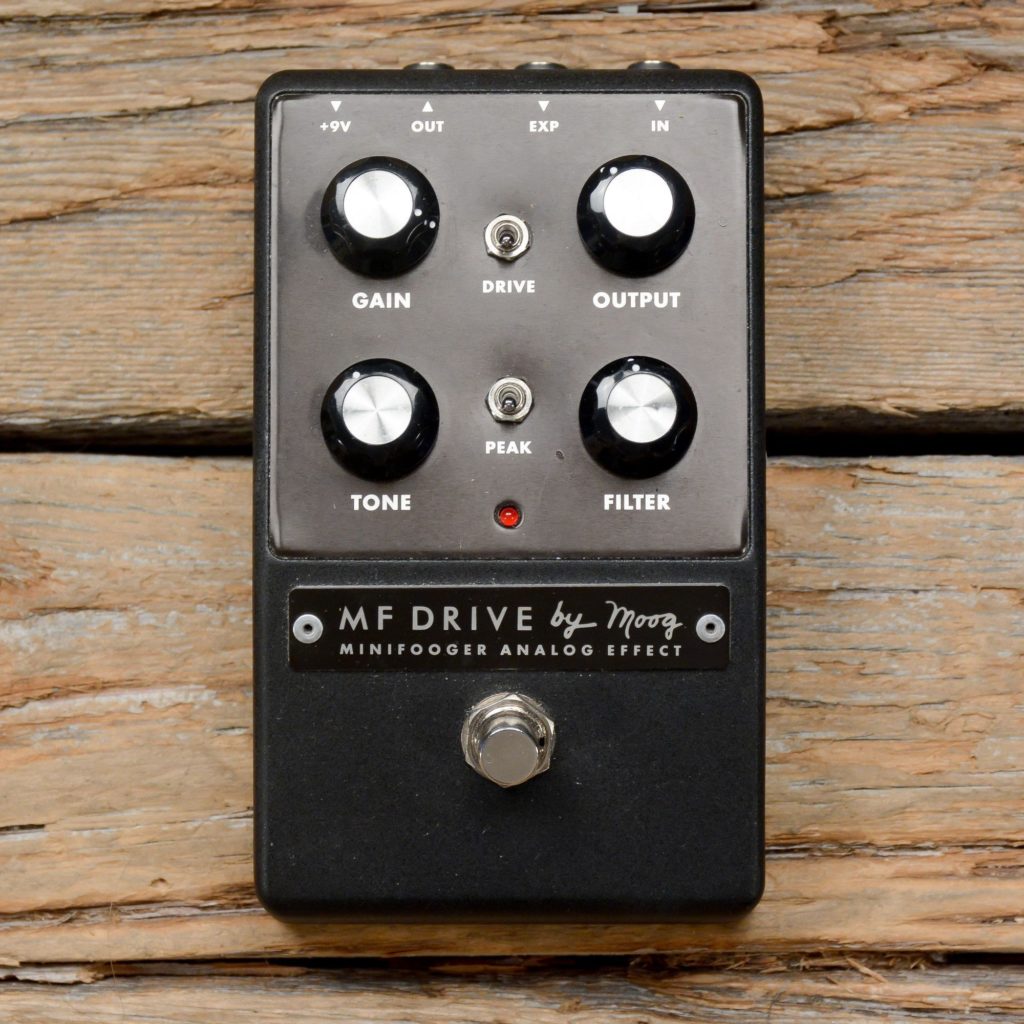
The other piece of gear I want to talk about is my MF Drive from Moog. This small beast is a dynamic and highly reactive filter-based overdrive pedal that employs a Moog Ladder Filter, boutique FET amplifiers, and classic OTAs in its drive section—essentially it’s the overdrive circuit that comes built-in with many Moog effects and synths in pedal format. It’s the perfect tool for cutting through the mix with an electric guitar without using a real amplifier, and I don’t know how I could live without it.
For this purpose, I also use a SansAmp Paradriver, which is a booster and parametric equalizer, right after the guitar and before the MOD Duo, in order to shape, compress, and thicken the tone from the beginning.
Everything that comes out from my MOD Duo runs through the Moog before going to the Mixing Link from Eventide, creating the effect loop in my pedalboard. You can really hear how it fattens the bass guitar note from the arpeggio in “Song With No Name.”
I would also like to mention a couple more favorites from my pedalboard: the Stone Deaf Tremotron (tremolo) and Syncopy (delay) pedals, that provide me my main amplitude modulation and echo; the Red Panda Tensor, which adds a sprinkle of sympathetic intervals into the harmony, kind of how sitar strings mechanics work; and the Glou Glou Pralines, which is always on, even if the effect loop is bypassed, and gives the whole tone some modulation with the combination of four filters sweeping on the sustained signal.
All of these tools help me to enhance and maintain my tone through the chain with their analog signal path, which, as I said before, is the main problem when playing electric guitar without real amplifiers and speaker cabinets.
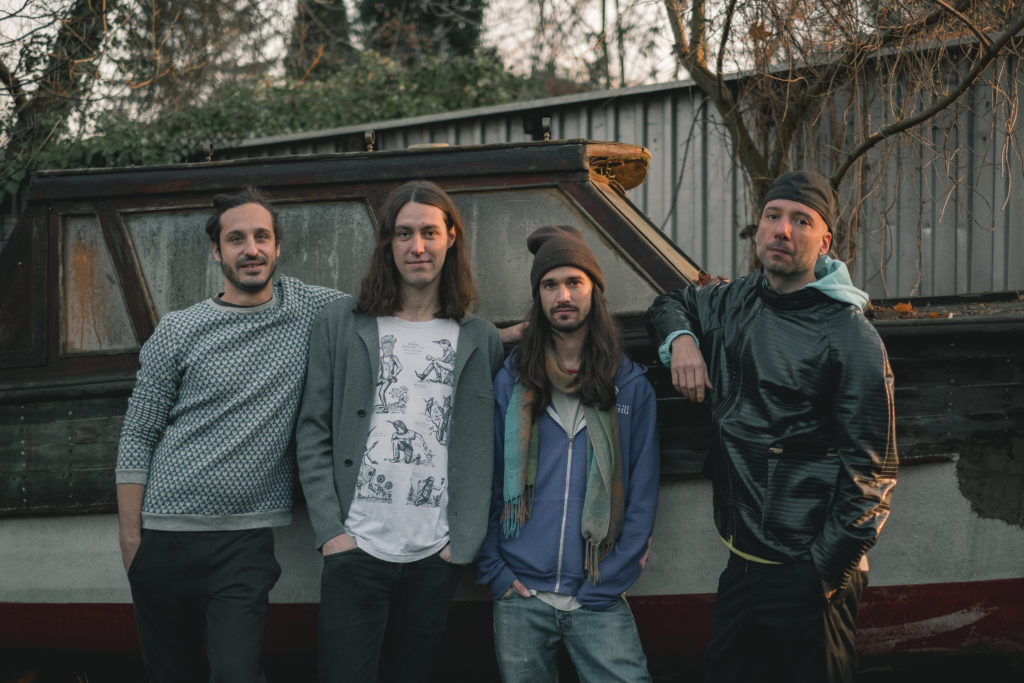
JACOPO
Moog Mother 32
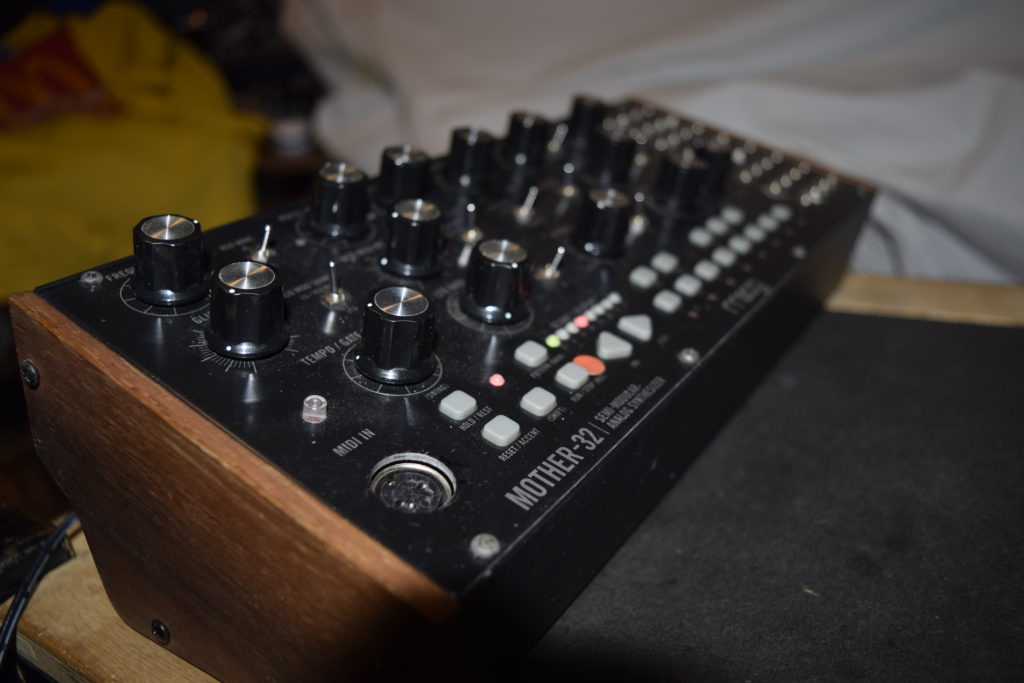
I purchased the Mother 32 when I needed to upgrade my live setup. I was looking for a desktop Mono analog synthesizer so I went to JustMusic in Berlin to test a bunch, and Moog had just released it. What made up my mind was not only the sound, but the sequencer. The Mother has an old school approach with a modern touch, which is to say there is no screen and it’s also intuitive. Needless to say, it was a lot of fun playing it right away!
I use it mainly for bass and mid-range arpeggios, but it also works well for leads and drones. For me, it is a quick machine to use; for instance, I could go from a slow and long bassline to a fast-rhythmic percussive one in seconds thanks to the MIDI-synced tempo knob and the sustain switch.
To give an example, let’s imagine we are approaching a breakdown, and I have a subtle bassline playing without sustain and a short decay. When Topper brings back the kick, I’d hit the sustain switch and bring the bass up front.
Unfortunately, writing a sequence is not so quick because the machine lacks real-time recording, but once you’re used to the note/rest workflow, it’s quite fun and it can sometimes lead to surprising mistakes.
The killer features on the sequencer, at least for me, are the “hold” and “reset” buttons, especially when improvising and performing. By tapping the “hold” button, I can shift the timing of the bass, and by pressing it down I can repeat single notes, which achieves a cool sort of “fill” effect. It’s handy for breaks, randomizing notes, or solo-like phrasing, and if things get too messy, I just push the “reset” button and I’m back to the original bassline sequence!
I also love the transpose feature, which is perfect for when I have to adjust the bass to the same key as the rest of a track or for any real-time melodic changes in the sequence. I would say that if used in a certain way, the sequencer feels like a musical instrument of its own.
Sound-wise, the M-32 is very subby, and sometimes it’s too much and that’s why we have it going through a side-chain compressor, triggered by Topper’s kick drums, at all times. To me, it has a vintage Moog sound but it can also get modern-acid or FM-ish thanks to the patching capabilities.
I always have the M-32 assignable output set to a random sample & hold CV, and I usually use it to affect the LFO rate or the filter resonance to give it a subtle ever-changing feeling. If you go up the octaves, it cuts the mix well with the classic Moog sound.
Arpeggios in tracks like “Lo Siento” and “Drumses III” are made with the M32 which, going through a stereo delay, the Strymon DIG, becomes dreamy and cosmic.
Finally, the Moog Mother works well when paired with the Roland MC-202, which is my other Mono synth of choice when playing live. They really compliment each other sonically. Having played on different sound systems, I’ve realized that if a club has more definition in the sub’s range, the M-32 will be my choice for the bass that night, and the 202 will be doing most of the arpeggios and leads, but if the sound system lacks subs then the 202 has a stronger mid-bass and will do a better job, whereas the Mother just disappears.
KORG Polysix
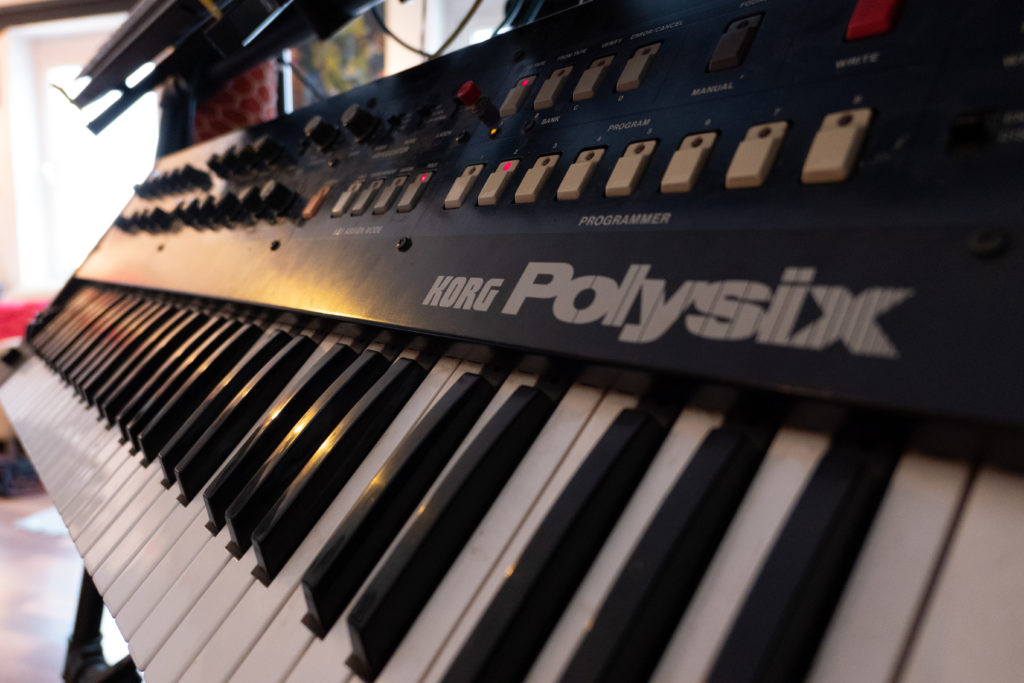
Topper and I found our Polysix while checking Kleinanzeigen, Germany’s best classified ads website, sometime in 2013. At that time, you could still find bargains if you were quick enough. I still think about the Jupiter 6 that we missed by just a couple of hours!
We bought the Polysix from a 60-something-year-old lady outside of the Berlin ring. It was listed as “not working” and so we bought it for a cheap price. The woman told us that she was the one who originally bought it, and it came with the original manual and the preset tape. She also said she had used it to learn how to play the piano, but it had been sitting unused on a desk for years, and so it was covered in dust. We tested it on the spot but no sound came out, so I fiddled with the volume knobs and suddenly I could hear a low detuned sound coming from my headphones. I looked at Topper and I whispered, “It works, mate..” We gave the lady her money, packed up the Polysix, and ran to the train to get back to the studio. After some contact spray and a bunch of fiddling with the volume knob, the beast was awakened. You can imagine how excited we were!
Later that week, we had it serviced by the trustworthy Phil-Synth, and the machine was in great condition and no battery leakage had happened, so he just recapped it and installed a newer leak-proof battery. We also did a modification that bypasses the synth’s effect circuit because it causes the signal to be super noisy; now we get a “purer” and more powerful signal taken straight after the master VCA. Phil also told us that the voices were slightly out of tune, a common problem apparently, but he also convinced us not to go through the expensive calibrating process, because that is what gives each Polysix his own character, and I have to say I couldn’t agree more!
The Polysix is a well known ‘80s synth so I’m not going to go through all the features here. But my favorites are the possibility to clock the arpeggiator with an external trigger like you can do with the Roland SH-101 sequencer, as it’s a really fun tool to come up with interesting melodies quickly, and the chord memory function for that instant Detroit vibe. But most of all I really just like the way it sounds!
You can hear this machine in chord mode in “Tony Little Something,” where Hugo did a wonderful job overdubbing those stabs, and the haunting unison bass-pad in “Pseudomartyrs.”
TOPPER
Eurorack Modular System
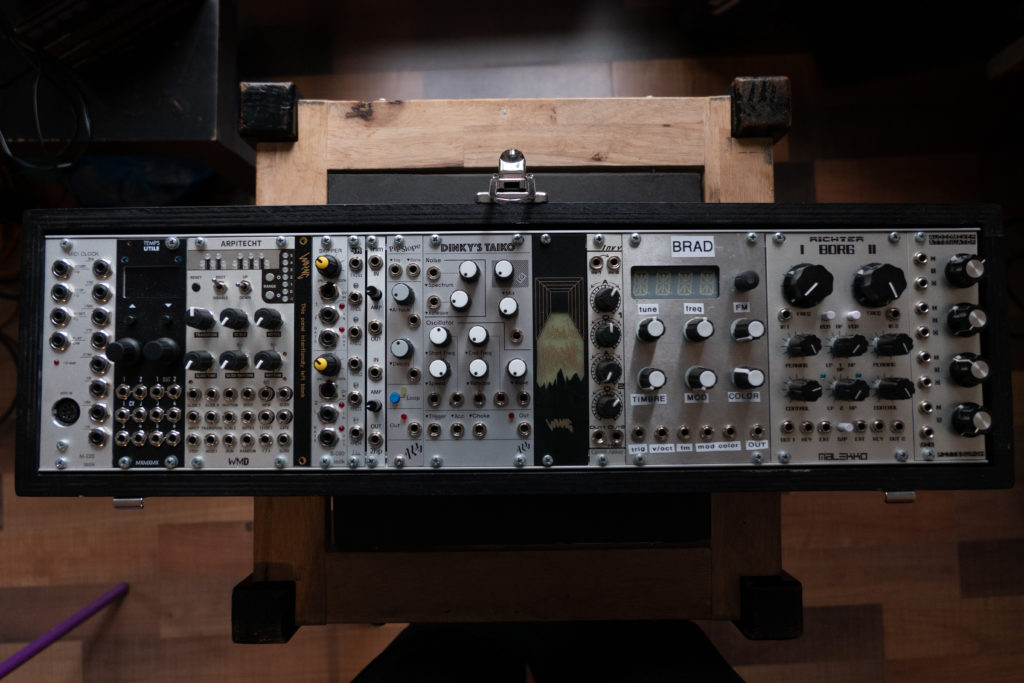
I caught the modular bug around five years ago, although I am happy to say that I think I’ve finally healed! I began by just checking out modules, reading through manuals, and also the invaluable Muffwiggler forum and various modular-focused Facebook groups. This all led into a deeper understanding of synthesis and a need to get even more out of the box. I slowly fell out of love with machines that didn’t have “one knob per function” and we started to evolve our studio concept towards a more hands-on experience. We sold a bunch of gear that didn’t fit the new concept—the most regrettable piece being a SCI Sixtrak—in favor of more knob-friendly machines, like the Vermona Perfourmer.
Meanwhile, I was constantly designing various “dream systems” on Modulargrid, and I borrowed a Clavia Nord Modular from tINI, which I of course eventually bought, and that got me started with the patching process.
The trigger to buy my first modules came after reconnecting with my friend Francesco Devincenti, from my early Berlin days. He showed me his system, which was half full of self-built modules, we made a couple of patches, and then it was game on. I bought my first case while on a trip to New York, which eventually became my custom liveset case that houses all the power supplies, a couple of drum machines and effects, and all the MIDI clock devices, and I started buying, selling, and trading modules. Eventually, I landed in the happy place I’m at now, where I can say I’m satisfied with the modules I have and I definitely don’t need to expand, and I’ve actually cut it down to two systems rather than three.
I have one Intellijel 7U 8hp travel case and a 104hp travel skiff. They’re both independent systems, geared towards a generative sound design approach; just feed them a MIDI clock and they can be easily integrated in the studio, on stage, or in whatever session I might find myself in.
The 7U is the more experimental one: it is driven by a Mutable Instruments Marbles, which generates three different gate sequences, which I then process through various probability and logic modules, each with an associated voltage output, which can then be used as either modulation source or pitch sequence.
Further modulations or pitch CVs are provided by the Malekko Voltage Block, Make Noise Maths, or by an Arturia Keystep. For sound generation, it can go both east coast or west coast. Oscillators are the Mannequins Mangrove and the Bubblesounds Vcob. I love to use lowpass gates (Make Noise Optomix, MengQi DPLPG) and pinged resonating filters (Mannequins Three Sisters, Random Source Serge Variable Q VCF), but I can never get tired of the classic OSC+VCF+VCA combination. Effects and further sound generation is provided by the Make Noise Erbe-Verb.
The skiff is more straightforward. Mutable Instruments Braids is the oscillator, and it goes through a Malekko Dual Borg for filter and/or low pass gate duties. I also have an FM drum voice (ALM Dinky’s Taiko) accompanying the synth voice. Gate sequences are mainly handled by an mxmxmx Temps Utile, pitch is generated by a WMD Arpitecht. Plus a couple of utility modules here and there.
You can hear the modular all throughout the Mescaleros album doing various percussion, quirks, bleeps, and noises, especially in “Bobby Peru,” “Teide,” and “Lo Siento.” It is also responsible for the opening/main synth line in “Drumses III,” besides the classic crickets sound!
JBL 4430 Studio Monitors
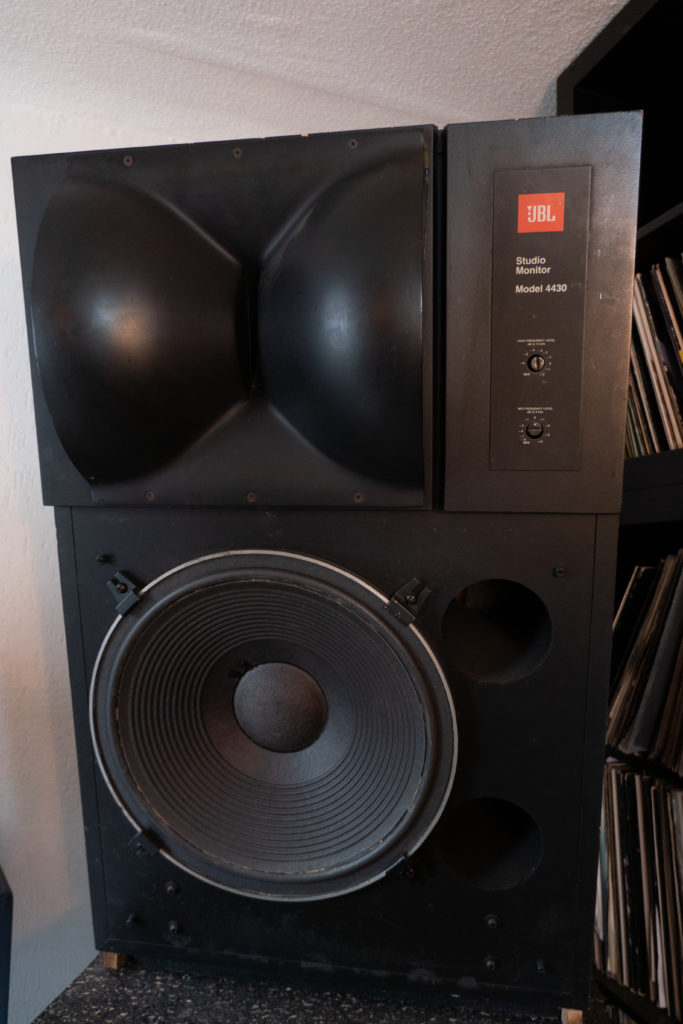
Special mention must go to our JBL 4430 speakers, both for what they do in the recording, editing, and mixing process, and for the story that led them to us.
A few years ago, Jacopo’s dad was working in the south of France. One day while driving through a fancy neighborhood in Cap Ferrat, he noticed these two huge speakers out with the trash, sitting outside a huge villa. They showed some sign of misuse like they had been used as a drink coaster, but apart from the foam ring holding the main cone that was completely gone and needed to be replaced, they looked totally fine. So he picked them up knowing that we would be interested in them and managed to take them back home to the Turin countryside with his tiny Opel Agila. After some months, Jacopo and I managed to find the time to go get the speakers and bring them back to Berlin.
While we were at it, we decided that a proper road trip was in order, and together with the JBLs we loaded up both our dads. Jacopo and I have grown up together, as our dads have been best friends since childhood, and it had probably been 15 years since we went on trip as just the four of us. I actually think the last time was a motorbike and camping weekend sometime in the late ‘90s or early ‘00s. The road trip was a blast! We got the JBLs safely to Berlin, had the foam ring refitted, built some huge stands, and they have served us loyally through the years.
The great thing about these speakers is that they can give you the feel of a club sound system while still being a linear studio monitor. They are designed to diffuse the sound pretty linearly throughout the room, and definitely do a good job at that, providing a great stereo image in a wide sweet spot. The exotic horn tweeters provide a beautiful high end, which doesn’t get tiring, even after prolonged use, while the 15″ drivers provide a huge low end and punchy mids. They have been a staple in countless commercial studios since the early ‘80s, and there’s a reason why.
HUGO
“Frankenster” MIDI Guitar
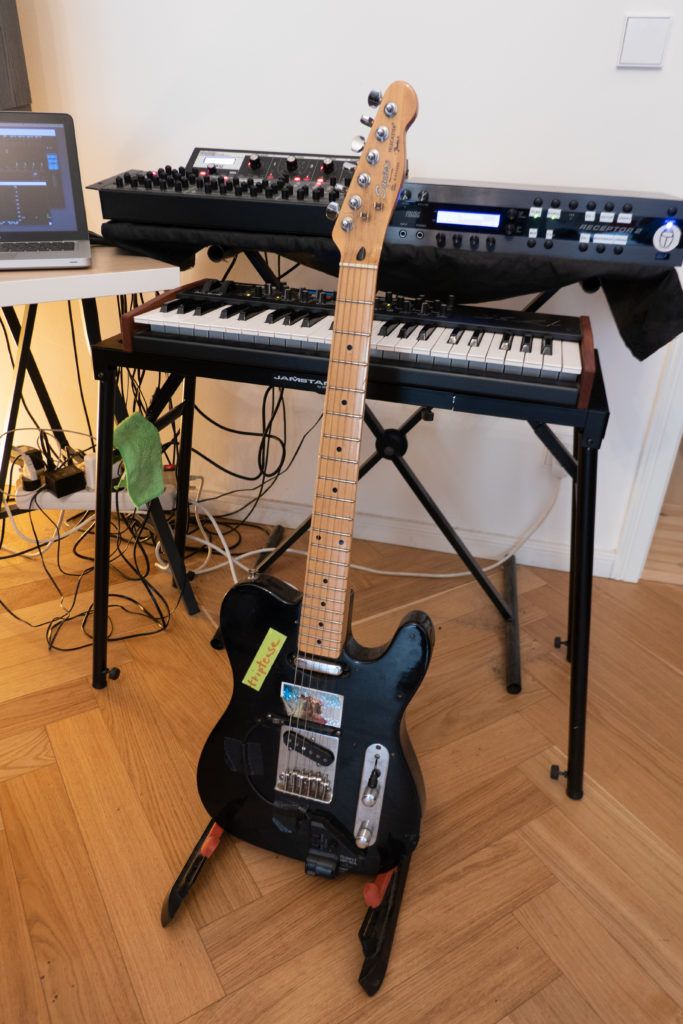
I’ve been told that a musician is someone who loads instruments worth €5000 into a car worth €500 to drive 100 kilometers to a club where they will be paid €50 euros. I was shocked when I heard this, but it motivated me and I wanted to show that it’s not right, so for Triptease, I decided to use a guitar that I found close to a rubbish bin—and I only ride taxis and my fee is €5000. Joking! We tour with a van, but the guitar story really is true.
One night, after a studio session while cycling back home, we noticed a guitar case standing next to a bin on the street. Inside was a black Fender Telecaster that was to become my new MIDI guitar, now known as the “Frankenster.” Luckily, I still had a Roland GK-2A MIDI pick up and the GI-10 interface from my old Stratocaster, which was stolen, and so I went on and installed it on the “new” instrument.
With the MIDI Guitar, I play the Muse Research Receptor 2, which is essentially a PC in a two-unit rack housing purposely built for the touring musician that runs your choice of VST instruments, samplers, and effects, with the UI (User Interface) and I/O (Input/Output) of a classic hardware synth module. Playing MIDI guitar gives me a more creative approach to electronic music, which is usually written with keyboards, DAWs, and drum machines, but the guitar allows me to integrate my “classical” knowledge into the world of electronics in a way that is more organic to me.
In “Teide,” for example, I made the bassline using the MIDI guitar, playing the Receptor loaded with a beautiful electric bass patch from Spectrasonics Omnisphere. That weird bass line in “Bobby Peru” is the MIDI guitar playing Native Instruments Reaktor inside the Receptor, and we routed the signal through the Hologram Dream Sequence pedal.
Elektron Octatrack
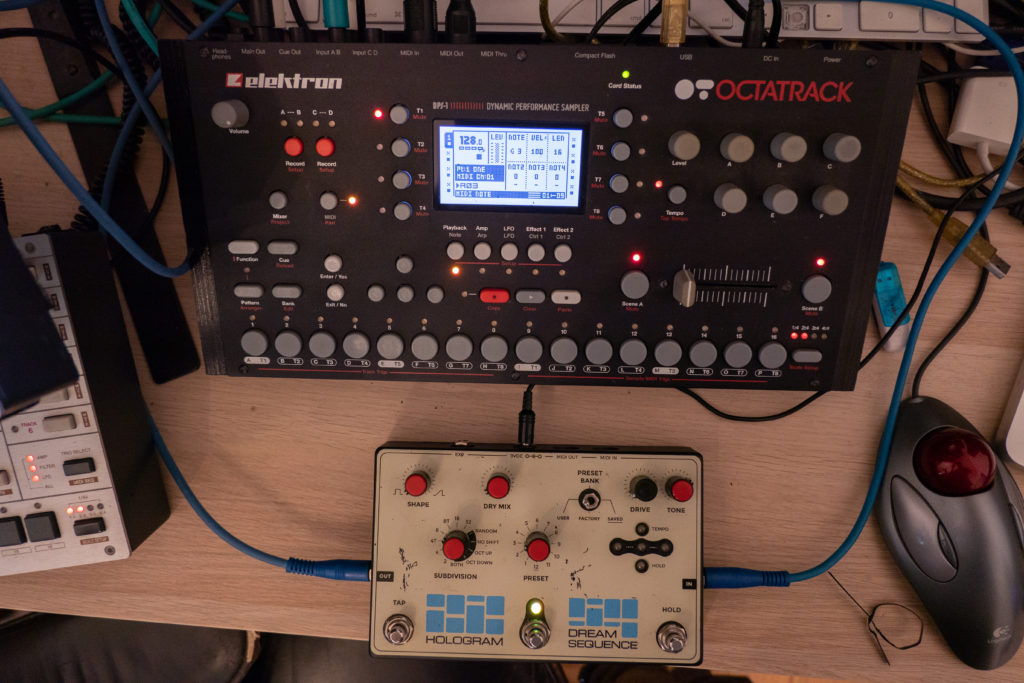
Another essential is the Octatrack from Elektron. I like mentioning the Swedish company because for many years it has been delivering inspiring music machines that we all love. You can listen to the way I used the Octatrack in “Duodular.” The strings and weird vocals are cuts from my personal collection of movies and radio samples loaded into the Octatrack and treated with its internal filters and effects. The Octatrack does not need big introductions. It has almost unlimited sampling memory (based on the size of your Compact Flash card), good editing functions over the samples, the infamous audio and MIDI sequencer, three LFOs per track, good effects, and routing over eight tracks. It sounds like a dream—or a trip?
Lead photo: Jacopo, Topper, Francesco, Hugo.
‘Mescaleros’ LP is out April 3 via Visionquest on vinyl and digitally.

